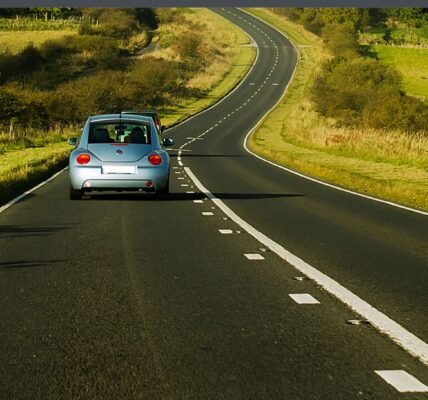Automation is transforming the way we drive. From autonomous vehicles to advanced driver-assistance systems, the future of driving is evolving quickly. It’s reshaping safety, efficiency, and the very concept of car ownership. In this blog, we’ll dive into how automation is redefining driving and what this means for the automotive industry. automation can improve in air quality as well as way for combat climate change. automation can improve driving efficiency as well as reduce driver dependence so it’ll lead to reduce road traffic accidents as well as reduce the human stress and anxiety level. so below, we learn from these that how automation can lead from environment friendly to human health improvement by reducing human error to to improving fuel efficiency. also we learn about how AI can help in these automation process of driving by improving machine learning. we in detail discuss about challanges faced by automation now and in future and also learn about how to overcome these challanges. we also learn about benefits of it by discussing several factors which can improve the quality of life.PM2.5 Pollution Sources in Northern India (2025)
What is Driving Automation?
Automation in cars involves the use of technology to perform driving tasks with little or no human intervention. This includes systems that control steering, acceleration, and braking. Today, it is present in many forms, from adaptive cruise control to fully autonomous vehicles.
- Levels of Driving Automation
Driving automation can be categorized into different levels, ranging from zero to five. At Level 0, the driver has full control, while at Level 5, the vehicle is fully autonomous with no need for human input. Right now, most cars on the market fall between Level 2 and Level 3, where they have advanced driver-assistance features but still require human oversight. - Key Features of Automated Driving
Features like lane-keeping assistance, automatic emergency braking, and self-parking are common examples of automation. These features work together to create a more seamless driving experience, minimizing human error. The higher the level, the more tasks the vehicle handles autonomously, reducing the driver’s role. - AI and Machine Learning
At the heart of automation is artificial intelligence (AI). AI enables vehicles to learn and adapt to their surroundings. By processing data from sensors and cameras, AI-powered cars can make decisions on the road—through continuous learning and improvement. that’s the major contribution of automation.Teaching in the Age of AI: Challenges and Opportunities

How Automation is Redefining Safety
One of the most significant benefits of automation redefining driving is safety. Human error is the leading cause of accidents, but automation can drastically reduce this risk. Let’s explore how it enhances safety:
- Reducing Accidents
Automated systems respond faster than human drivers. For example, automatic emergency braking can stop a car faster than a human can react. Similarly, lane-keeping assistance prevents unintentional lane drifting, reducing the likelihood of accidents. By removing the element of human error, making driving safer for everyone. - Collision Avoidance Technology
Many automated vehicles come with collision avoidance technology. This technology uses sensors and cameras to detect obstacles and automatically steer the vehicle away from danger. - Driver Fatigue and Distraction
Driver fatigue and distraction are major contributors to accidents. it helps alleviate these issues by taking over some of the more tiring driving tasks. For example, adaptive cruise control adjusts the speed of the car based on traffic, reducing the need for constant acceleration and braking. This allows drivers to stay more alert and focused.
The Role of Automation in Reducing Traffic
Automation is also changing the way we think about traffic management. Smart cars equipped with automation can communicate with each other and with smart infrastructure to reduce congestion.
- Vehicle-to-Vehicle Communication
Automation enables vehicle-to-vehicle (V2V) communication, where cars exchange information about speed, direction, and traffic conditions. This real-time data allows vehicles to adjust their speed to avoid congestion. As a result, traffic flow improves, and the risk of accidents decreases. - Traffic Optimization
Automation doesn’t just benefit individual drivers—it can optimize traffic systems as a whole. Connected vehicles can work together to create more efficient traffic patterns. This leads to smoother commutes, fewer traffic jams, and less fuel consumption. Cities that adopt smart traffic systems will see significant improvements in mobility and air quality. - Platooning for Efficiency
Another innovation in automated driving is platooning. In platooning, several automated vehicles travel in close proximity, reducing drag and improving fuel efficiency. The lead vehicle controls speed and braking, while the others follow in sync. This not only reduces fuel consumption but also decreases the space needed on the road, helping to reduce congestion.
Automation and the Future of Car Ownership
As automation redefines driving, it is also changing the way we think about car ownership. Automation is paving the way for shared mobility services and autonomous taxis.
- Rise of Ride-Sharing and Autonomous Taxis
With the rise of automation, owning a car may no longer be necessary. Ride-sharing services and autonomous taxis could become the norm. In this future, cars could be used on-demand, reducing the need for personal vehicle ownership. This shift will lower costs for consumers while reducing the environmental impact of car production. - Subscription Models for Automated Vehicles
In the future, subscription models for automated vehicles could become popular. Instead of owning a car, consumers could pay a monthly fee to access an automated fleet. This would provide the convenience of a personal vehicle without the hassle of maintenance, insurance, or parking. - Sustainability and Reduced Emissions
Automation also aligns with the push for sustainability in the auto industry. By optimizing routes, reducing traffic, and enabling electric autonomous vehicles, automation will contribute to a reduction in carbon emissions. This will support global efforts to combat climate change.Climate Change and Its Effect on India in 2025: A Growing Challenge
Challenges in the Automation Revolution
While the future of automation redefining driving is bright, there are still challenges to overcome. These include regulatory issues, cybersecurity concerns, and the public’s readiness to embrace automated vehicles.
- Regulation and Legislation
Governments must establish clear regulations to govern automated vehicles. These rules need to address safety standards, liability issues, and data privacy concerns. Without proper regulations, the full potential of automation may remain untapped. - Cybersecurity Risks
As vehicles become more connected, they are also more vulnerable to cyberattacks. Ensuring the security of automated systems is crucial to preventing malicious hacking. Automakers and governments must work together to create robust cybersecurity measures that protect both drivers and infrastructure. - Consumer Trust and Adoption
Public perception remains a significant hurdle for automated vehicles. Many people are still skeptical about the safety and reliability of autonomous driving technology. Automakers will need to demonstrate that these systems are safe and reliable before widespread adoption occurs.
Real-World Examples of Automation in Action
Several automakers and cities are already leading the way in automated driving. Companies like Tesla, Waymo, and General Motors are testing autonomous vehicles on public roads. These tests are helping to refine the technology and bring automation closer to widespread adoption.
- adaptive cruise control. Tesla continues to push the boundaries of what automation can achieve, with the goal of creating fully autonomous vehicles in the near future.
- Waymo’s Autonomous Taxis
Waymo, a subsidiary of Alphabet, is testing autonomous taxis in several U.S. cities. These self-driving taxis aim to provide convenient and affordable transportation options without the need for a human driver. This represents a major step forward in the automation revolution.
Conclusion
The future of driving is changing rapidly. Automation is redefining driving in ways that will make our roads safer, reduce traffic congestion, and reshape the auto industry. As technology advances, we will see even greater improvements in efficiency, sustainability, and convenience. However, challenges such as regulation and cybersecurity must be addressed to ensure the successful adoption of automated vehicles.
The road ahead is full of exciting possibilities, and automation is at the forefront of this revolution. As we continue to embrace automation, we are accelerating toward a new era of driving that promises to transform the way we move.




